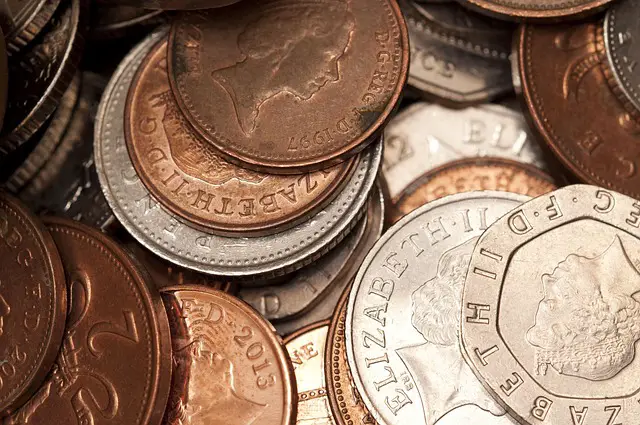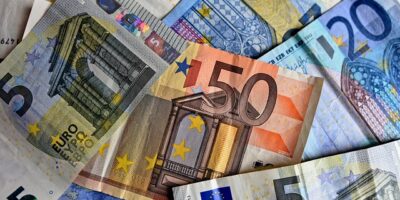What is a Coin?

What is a Coin? A coin is a small, flat, round piece of metal (or sometimes other materials) that is used as a medium of exchange or currency. Coins are typically issued by a government or other authority and usually have a denomination, or a stated value, such as one dollar or one euro.
Coins have been used as a form of currency for thousands of years and have been made from a variety of materials, including copper, silver, gold, and nickel. In addition to their use as currency, coins can also be collected as a hobby or used for various decorative or commemorative purposes.
What is the Brief History of Coins?
The history of coins dates back to ancient times, with some of the earliest examples dating back to the 7th century BCE in ancient Lydia, a region in what is now Turkey. These early coins were made of electrum, a naturally occurring alloy of gold and silver, and featured simple designs such as an image of a lion or bull.
Over time, the use of coins spread to other parts of the world, including ancient Greece, where coins were made of silver and featured images of gods and goddesses. In ancient Rome, coins were used to pay soldiers and taxes and were made of gold, silver, and bronze.
During the Middle Ages, coins continued to be used as a form of currency and were often minted by local rulers and nobles. In Europe, the introduction of the printing press in the 15th century made it possible to mass-produce coins with greater accuracy and consistency.
In modern times, coins are typically issued by governments, and often feature images of prominent historical figures or national symbols. The use of paper money and digital currencies such as credit cards and cryptocurrency has largely replaced the need for physical coins in many parts of the world, but they continue to be used as a convenient and widely accepted form of currency in many countries.
What Are the Different Types of Coins?
Coins have played an important role in the history of trade, economics, and culture, and continue to be valued and collected by people around the world. There are many different types of coins, and they are:
- Circulating coins: These are coins that are intended for everyday use as a form of currency. Examples include the US dollar, Euro, and Japanese yen.
- Commemorative coins: These are coins that are minted to commemorate a special event, anniversary, or historical figure. They are often issued in limited numbers and may have a higher value than circulating coins.
- Bullion coins: These are coins that are made from precious metals such as gold, silver, or platinum. They are often used as a form of investment or as a store of value.
- Error coins: These are coins that were made incorrectly, such as those with a double stamp or with the wrong design. They are often considered valuable by collectors.
- Ancient coins: These are coins that were minted in ancient times, such as those from ancient Greece or Rome. They are often collected for their historical significance and rarity.
- Proof coins: These are specially minted coins that are made using a high-quality minting process and are often made from precious metals. They are typically sold to collectors and may have a higher value than other coins.
- Token coins: These are coins that are used for purposes other than as a form of currency. They may be used as gaming tokens, transit tokens, or for other specialized purposes.
What Are the 4 Major Coins Circulating in the U.S.?
The four major coins in the US. These coins are commonly used in everyday transactions and are easily recognizable by most people in the US, they are:
- Penny: The penny is the smallest denomination of US currency and is worth one cent. It features a portrait of Abraham Lincoln on the front and the Lincoln Memorial on the back.
- Nickel: The nickel is worth five cents and features a portrait of Thomas Jefferson on the front and Monticello, Jefferson’s Virginia estate, on the back.
- Dime: The dime is worth ten cents and features a portrait of Franklin D. Roosevelt on the front and an olive branch, torch, and oak branch on the back.
- Quarter: The quarter is worth twenty-five cents and features a portrait of George Washington on the front and a design representing a different state or territory on the back. There are 56 different designs in the series, one for each state and US territory.
Why Are Coins Important?
Coins have played an important role in the history of trade, economics, and culture, and continue to be valued and collected by people around the world.
- Coins have been used for centuries as a convenient and widely accepted form of currency. They are accepted as payment for goods and services and are easily exchanged for other forms of currency.
- Coins made from precious metals such as gold or silver have historically been used as a store of value, meaning they can be saved and traded for their inherent value.
- Coins often feature images and symbols that represent a country’s culture, history, and values. They can serve as a way for a country to showcase its identity and promote its values.
- Commemorative coins are often created to honor a significant event, person, or achievement. They can serve as a lasting reminder of important historical events.
- Collecting coins can be a fun and rewarding hobby. Coins can be collected for their historical significance, rarity, or aesthetic value, and can be traded or sold as part of a larger collection.
What Would the World Be Like Without Coins?
If there were no coins, there would likely be some significant changes to our daily lives and the economy as a whole. Here are some potential consequences:
- Increased Use of Digital Payment Methods: Without coins, people would rely more on digital payment methods, such as credit and debit cards, mobile payments, and online transactions. This could lead to a more cashless society, but could also create problems for those who don’t have access to digital payment methods or prefer to use cash.
- Roundoff or Increase in Prices: In many countries, coins are used for small transactions and prices are often set to end in multiples of five or ten cents. Without coins, prices would need to be rounded up or down, which could lead to small price increases or decreases. In some cases, merchants may choose to increase prices slightly to avoid losing out on small amounts of profit.
- Change in Monetary Policy: Central banks around the world use coins as a way to control the money supply and implement monetary policy. Without coins, central banks would need to rely on other tools, such as adjusting interest rates or changing the amount of paper currency in circulation, to manage the economy.
- Changes to Coin-Dependent Industries: Many industries rely on the use of coins, such as vending machines, laundromats, and parking meters. Without coins, these industries would need to adapt and find new ways to accept payment.
Overall, the absence of coins would likely have significant impacts on the economy and daily life, but it’s important to note that many countries are already moving towards a more cashless society, so some of these changes are already happening.


